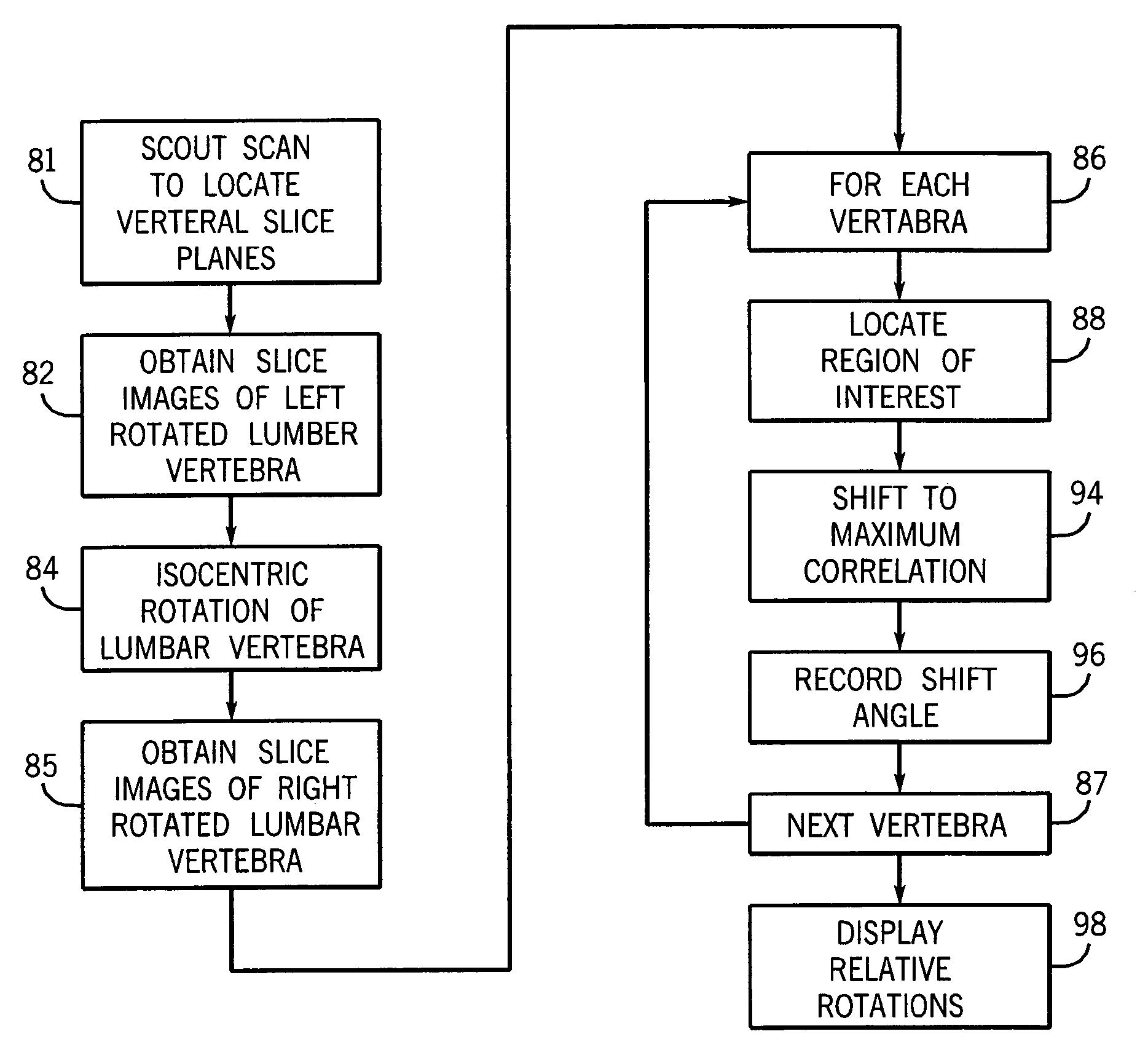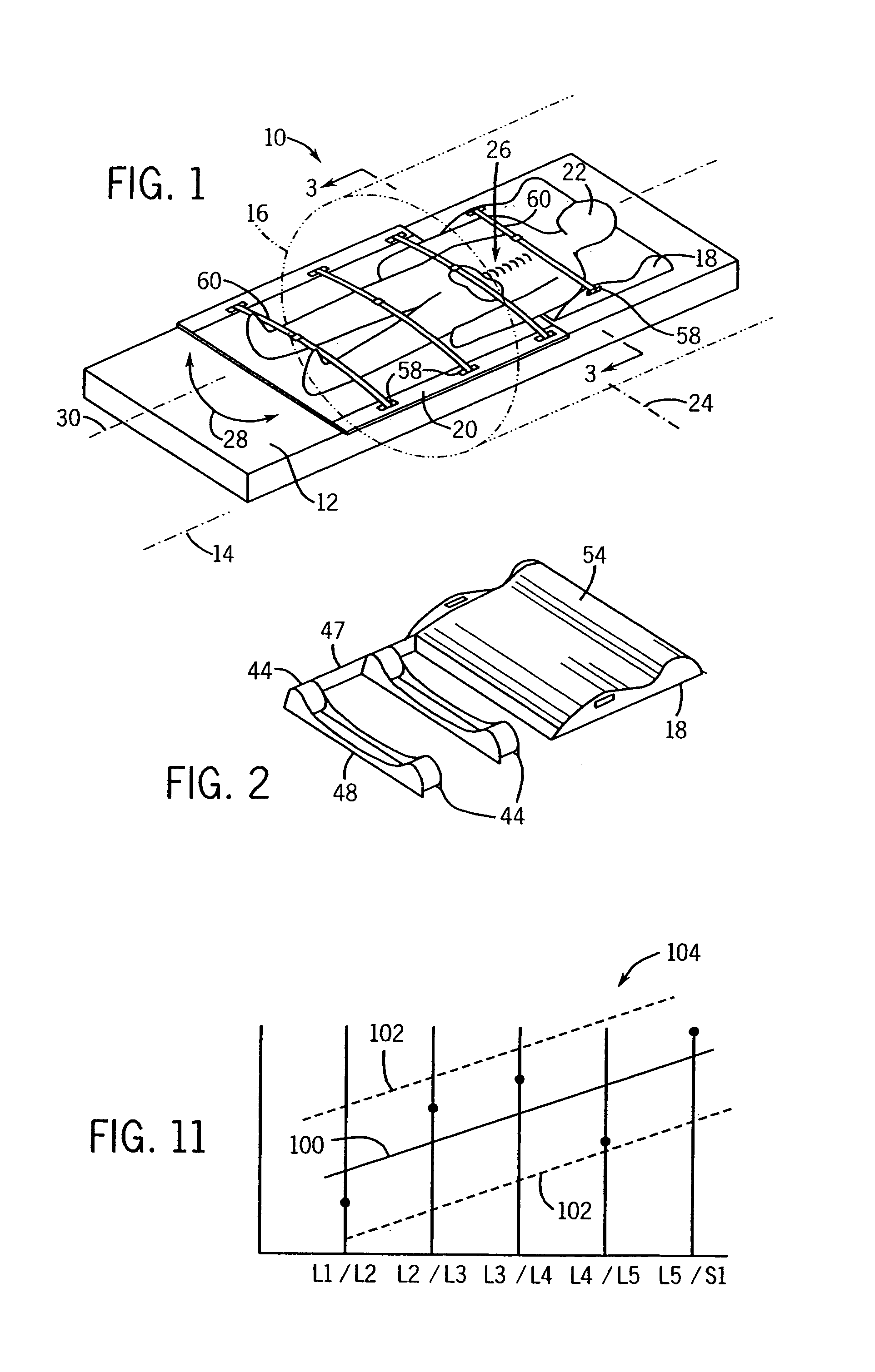Patient support and method for studies of lumbar vertebra rotation
- Summary
- Abstract
- Description
- Claims
- Application Information
AI Technical Summary
Benefits of technology
Problems solved by technology
Method used
Image
Examples
Embodiment Construction
[0045]Referring now to FIG. 1, a patient support 10 of the present invention is adapted to rest on a patient table 12 and extend along a longitudinal axis 14 into a cylindrical bore 16 of an axial imaging machine. The axial imaging machine may be, for example, a computed tomography (CT) or magnetic resonance imaging (MRI) machine or other medical imaging device capable of making axial images. Axial images are those that reveal a cross-section generally perpendicular to the patient's superior-inferior axis.
[0046]When an MRI machine is used, it may, for example, be a GE Signa LX 1.5 T MRI scanner and the patient scanned axially with a flexible surface coil using a 3D spoiled gradient-echo (SPGR) sequence (TR=24 MS, TE=MS, 1×1×2 mm3 voxels). Twenty-five scans may be made at angular positions of 0.0–10.0° and 18.5–20.0° in 0.5° steps.
[0047]In a first embodiment, the patient support 10 includes a stationary portion 18 longitudinally adjacent to a rotatable portion 20. The stationary port...
PUM
 Login to View More
Login to View More Abstract
Description
Claims
Application Information
 Login to View More
Login to View More - R&D
- Intellectual Property
- Life Sciences
- Materials
- Tech Scout
- Unparalleled Data Quality
- Higher Quality Content
- 60% Fewer Hallucinations
Browse by: Latest US Patents, China's latest patents, Technical Efficacy Thesaurus, Application Domain, Technology Topic, Popular Technical Reports.
© 2025 PatSnap. All rights reserved.Legal|Privacy policy|Modern Slavery Act Transparency Statement|Sitemap|About US| Contact US: help@patsnap.com



